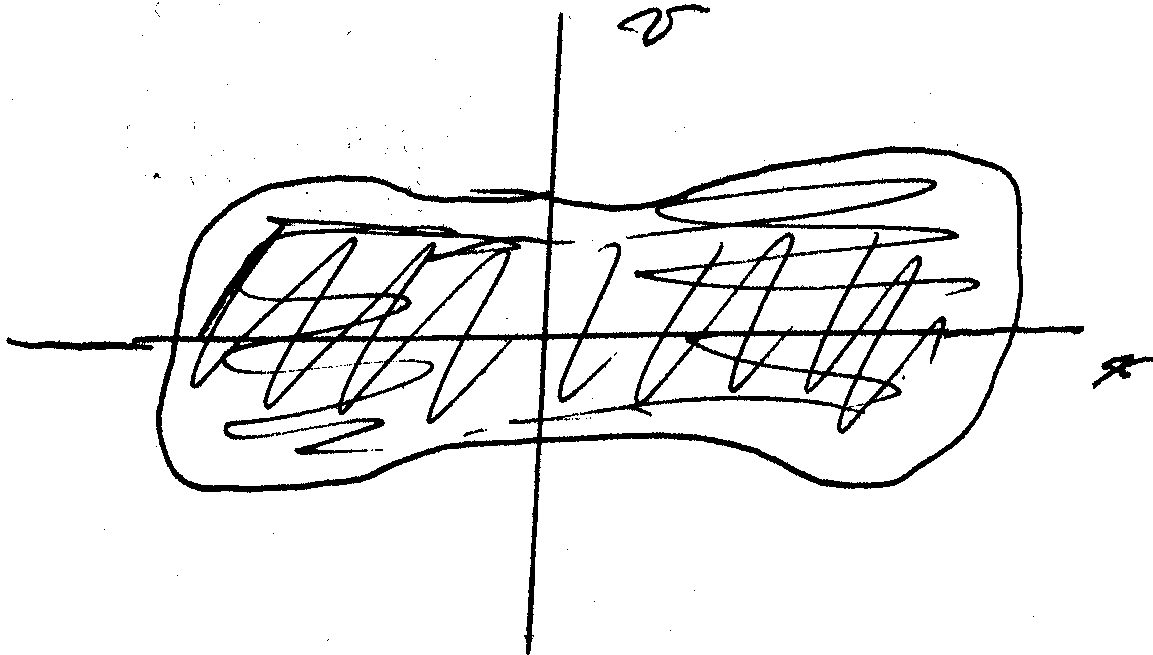Next: Driven Two Well Duffing Up: Duffing_story Previous: Driven One Well Duffing
Driving harder the One Well Duffing Oscillator eventually
results in the system going chaotic. A characteristic
of this solution is that a chaotic trajectory will
fill the allowed region of phase space. The following is
a sketch of a trajectory in phase space for
the driven Duffing Oscillator with driving
strength ![]() .
.

It is clear that such solution is very different that we saw previously!
Order within Chaos
The solution above is chaotic. Plotting ![]() and
and ![]() versus
versus ![]() shows that the solution has lost any trace
of periodic behavior (despite the fact that the driving
term is perfectly periodic!). The patterns do not
repeat themselves.
shows that the solution has lost any trace
of periodic behavior (despite the fact that the driving
term is perfectly periodic!). The patterns do not
repeat themselves.
The solution ventures all over the phase space but the motion remains within a finite region of space. The solution exhibits a very sensitive dependence over initial conditions - this is a hallmark of chaotic behavior.
Stroboscopic Map - Strange Attractor
All this points to the chaotic (random) aspects of the
solution. To see order within this solution
requires another way of thinking. We need to look at
the solution in a phase space that includes the time ![]() axis,
i.e.,
axis,
i.e., ![]() .
.
The system is driven by an external driving term of
angular frequency
![]() , corresponding
to a period
, corresponding
to a period
![]() . Imagine asking
where is the steel beam and how fast does it go
at each period of the external driving term
and recording this info in a phase space like graph
. Imagine asking
where is the steel beam and how fast does it go
at each period of the external driving term
and recording this info in a phase space like graph
![]() versus
versus ![]() . Each time
. Each time ![]() defines
a plane in
defines
a plane in ![]() versus
versus ![]() which the trajectory
traverses at one point. So a trajectory
will generate one dot per time interval
which the trajectory
traverses at one point. So a trajectory
will generate one dot per time interval
![]() . This is called a Stroboscopic Surface of Section
or a Stroboscopic Map.
. This is called a Stroboscopic Surface of Section
or a Stroboscopic Map.
A Limit cycle would generate very few distinguishable points in such a construct since the trajectory repeats a pattern. The chaotic solution of the Duffing Oscillator generates the following picture.

This is a Strange Attractor.
Michel Vallieres 2014-03-04